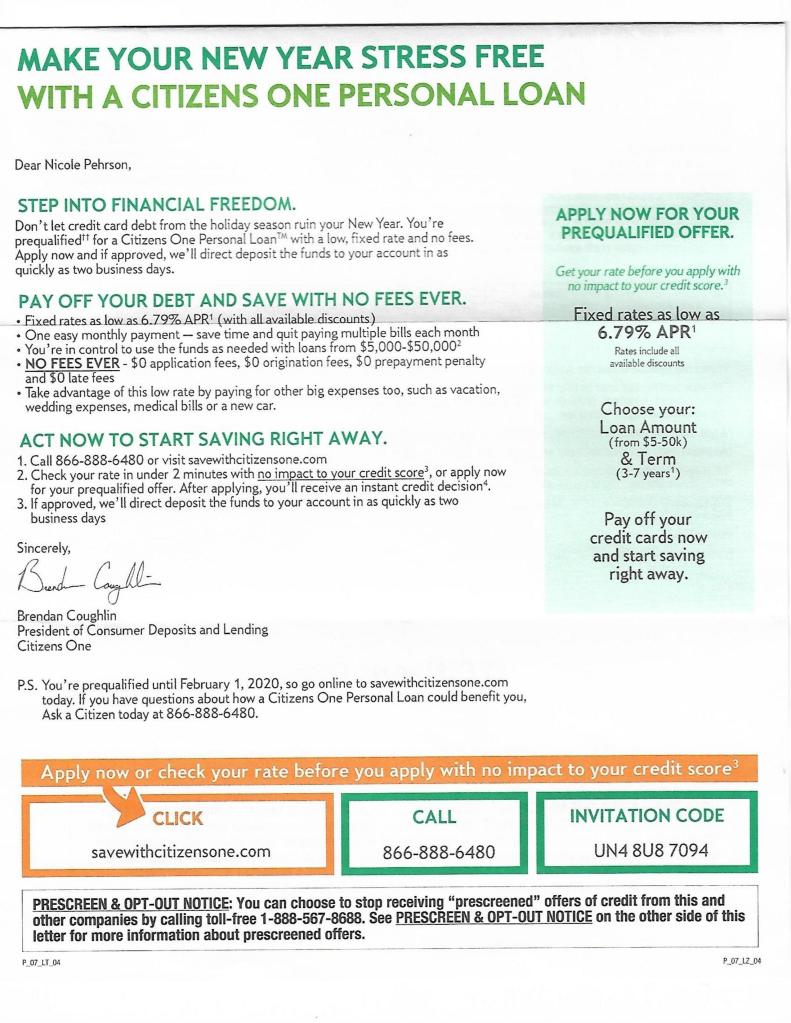-
Direct Mail Letter Examples and Prices
The purpose of a direct mail letter is to encourage your readers to take action. This action can take many forms, including scanning a QR code, visiting a website, or even carrying the letter into a retail store. In order to create a sense of urgency, it is best to include a call to action, or CTA, with your letter.

You can use a template or get a direct mail letter example to give you a better idea of what to include in your letter. Direct mail is a great way to communicate with your customers and prospects. You can choose to send a letter on letterhead, or you can hire a professional direct mail service to take care of the details for you.
The most effective direct mail pieces have an organized message and clear benefits. The offer must be so compelling that your prospects can’t refuse it. A good example of a direct mail sales letter would have a punch-out coupon or a sales sheet attached to it. It’s also worth including a website address and phone number on each side of the piece.
The cost of printing and mailing your direct mail letter will depend on the format and the size. Smaller postcards cost a lot less than multiple-page letters. Although many marketers try to keep costs down by using smaller formats, studies have shown that larger-sized formats yield higher ROI. When choosing a format, consider what your message is and whether it requires more real estate. A simple message can be delivered in a small format, while more complex ideas require more space.
-
Direct Mail Letter Examples Nonprofits
Direct mail letter examples nonprofits should be clear and concise, with a clear call to action. Nonprofits need to remember that their mailings are often very limited in budget and should use the most effective tactics to maximize their efforts. One of the best ways to achieve this is by knowing your audience. Make sure to send only to those people who are likely to support your cause.

Nonprofits should use direct mail to make donors feel important. They can do this by using compelling stories, high-quality design, and personalized messages. These stories can express their passion for the work that they do, their gratitude for their contributions, and establish credibility. You can use templates like MailChimp to create a powerful direct mail letter for your nonprofit. They offer a variety of editing tools and high-quality mailer designs.
Direct mail is still the single most effective way of fundraising for nonprofits. It’s highly effective at reaching potential donors and repeat donors. The target audience is usually adults with discretionary income and comes from generations that are used to receiving the mail. Even digital marketing generations appreciate receiving direct mail, because it brings a sense of intimacy. The tactile experience of receiving a printed piece of paper beats an email any day.
Donors are most likely to respond well to direct mail letters, and the most effective non-profits often find that they get the highest response rates. Direct mail campaigns are conversational in nature, and they often ask the recipient to do something that will help their cause. Nonprofits usually ask for monetary donations, but they can also ask for in-kind or volunteer time.
-
How to Write the Best Direct Mail Letter Examples
In this guide, we’ll take a look at a few direct mail letter examples. These letters are a great way to welcome new customers and give them information on how to use your product. They can also serve as a way to introduce your brand to your neighbors. The key is to make sure that your direct mail appeals to the top 17 decision-makers in your company’s industry.

When creating a direct mail letter, use conversational language to appeal to your readers. Avoid fluff and overly technical language. Make sure that you describe the features, benefits, and details in an understandable manner. Short sentences are easier to read. Ideally, your direct mail letter is no longer than one page. If it is longer, break it up between pages.
You should also include a call-to-action in your letter. It is important to use a call-to-action that calls your readers to do something. The action may be to visit your website, book an appointment, or simply email the business. The call-to-action should be placed at the end of the letter so that it is easy to access and read. It should also contain a P. S. that states the objective of the letter and what the CTA is.
You should also consider personalizing your letter. Many direct-mail pieces do not include personalization. Local businesses often use a generic introduction with a simple greeting, but you can add a personalized greeting to your letter. However, this can add to the costs and complexity of your letter. Fortunately, most mailing houses can print personalized letters with names and addresses on computer disks.
-
How to Write a Full Postal Address Example
When you’re sending a letter, the first line of your postal address should contain the full name of the person to whom the letter is addressed. The second line should contain the building number and street name. If the address is for a diplomat, it will also be necessary to include the city. If you’re sending a letter to a company, you can also put the title of the person concerned.
For a rural location, you can also include the state and city symbols instead of the full state name. In order to avoid confusing postal machines, you can use an abbreviation for “county.” After these two parts, you should include the zip code and country name. Make sure that you use the right-most corner of the envelope to place the stamp. You’ll need to use a separate stamp for packages, as well.
Another thing you should know about postal addresses is that they are not the same in all countries. Even the US postal system has rules regarding them, so it’s always a good idea to check examples before writing your own address. This way, you can avoid making common mistakes. And you’ll be better prepared to write a letter that will get its intended recipient’s attention.
For example, if you’re sending a package to someone in Illinois, you should include the state and city. This is crucial as these two are required for validation. Be sure to capitalize the state abbreviation as well.

-
How to Use a Geocoding API
The Geocoding API offers a number of ways to geocode data. For example, you can perform searches by entering an address, or by specifying a location and then using a different method for finding information about that location. The Geocoding API is recommended for queries involving address-specific information, such as street addresses. It is not recommended for queries with ambiguous addresses, or for queries with non-address information.

The geocoder returns results in JSON format, so you can use it with any application. It also tries to use the user’s native language. This means that it will attempt to return a readable street address in the preferred language. It also transliterates the results to a user-friendly script when necessary.
Geocoding APIs are available from different companies. For example, Google provides a free version and a paid one. If you want to use Google’s geocoding API, you can request a free trial and test it out to see how it works. If you’re not satisfied with the free version, you can pay for a paid version and get unlimited geocoding.
The geocoding API should have the ability to check the address against an authoritative database. This process is called address validation, and it is the first step to world-class geocoding. If an address is invalid, the service should return a status code indicating that it is invalid. This allows the user to fix the request if necessary.
-
Subscribe
Subscribed
Already have a WordPress.com account? Log in now.